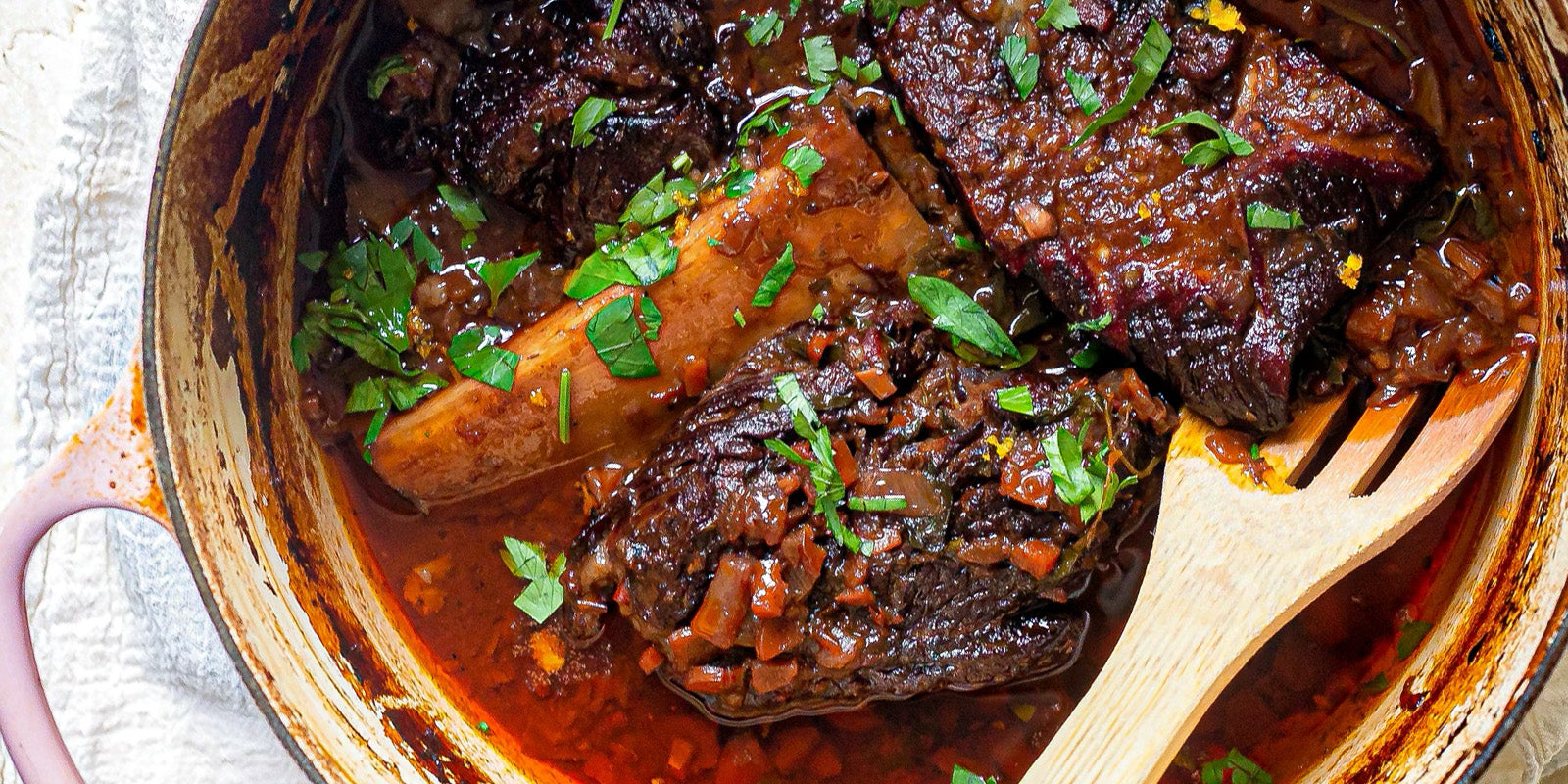All the Feels, Part 2: Techniques for Incorporating Texture in Cooking
 The plush creaminess of lobster bisque; a feather-light meringue; the warm fuzz of a late-summer peach — these are the sensory experiences that make food so much more than just sustenance for our bodies. Texture infuses food with poetry, nostalgia and joy.
The plush creaminess of lobster bisque; a feather-light meringue; the warm fuzz of a late-summer peach — these are the sensory experiences that make food so much more than just sustenance for our bodies. Texture infuses food with poetry, nostalgia and joy.
For ambitious home cooks, learning to build texture is just as important as learning to construct flavor. This can be done through the strategic use of technique and ingredients. Here, we’re focusing on a few of our favorite methods to coax beautiful textures from your food:
Believe in Braising
Braising is the OG slow-cooking method: You just need time and a low, consistent temperature. This technique coaxes incredible tender textures from ingredients and, in some cases, completely transforms them.
Technique talk:
- Usually the main ingredient is browned in a pan, then placed into a large vessel with a lid, like a Dutch oven, with some kind of liquid added. It’s then simmered or baked for an extended period.
Lean, tough (and often more affordable) cuts of meat, like chuck roast, pork shoulder and lamb shank, magically fall off the bone after a leisurely braise. This method is responsible for so many dishes we love. Carnitas tacos? Braised. Short ribs? Braised. Beef bourguignon? Oui, c’est braiséd. Braise be!
Vegetables can also benefit, texturally speaking, from braising. Braised cabbage, smooth as a silk pillowcase, almost seems like a different vegetable compared to its raw state. Those CSA veggies that you’re never quite sure what to do with? (We’re looking at you, celery root.). A low-and-slow braise in vegetable broth, gives them a luxurious makeover. Collard greens famously undergo a high-drama transformation when braised with cream or coconut milk: instead of tough and woody, they become succulent and yielding.
Chill, Babe
Just as heat can have a huge impact on texture, so too, can cold. One of our go-to kitchen hacks is using an ice bath to revive fruits and veg that have gone limp. A soak in icy water can truly bring them back to life — it’s like a produce polar plunge!
Technique talk:
- This works best for firm, dense produce that you intend to eat raw, like radishes, golden beets, apples, green beans, asparagus, and lettuce. Cut or slice the item how you prefer to serve it, then submerge in a bowl full of ice and water, and place in the fridge. After between 30 and 60 minutes, the produce will be crunchy again. Drain and pat dry before using in your meal.
- You can also bring slightly wilted leafy herbs, like parsley and cilantro, back from the brink by trimming the stems of the bunch and placing them upright in a glass of ice water, like you would with a bouquet of flowers. After about an hour, they should have their color and texture restored. The same method works for bunches of celery, too.
Don’t stop the party now! Head to part one of this texture-focused series to get even more tips, tricks and kitchen hacks.
For delicious recipes using ZENB’s plant-powered pasta and sauces, dive into our library of 100+ plant-packed recipes. Inspo abounds on our social media pages, so follow along on ZENB’s Instagram, Pinterest, and Facebook pages.




